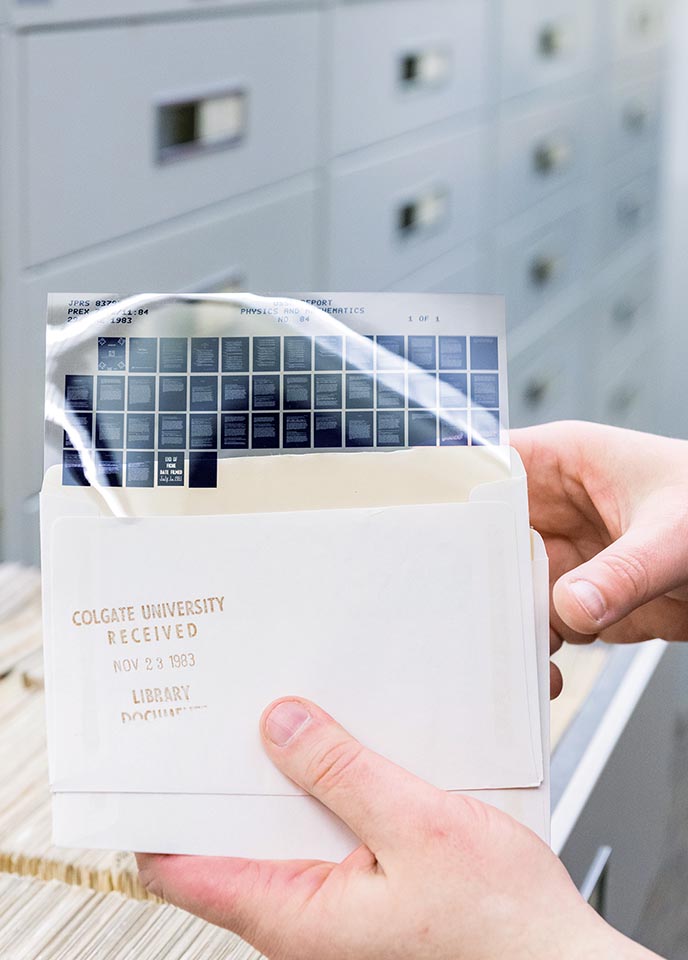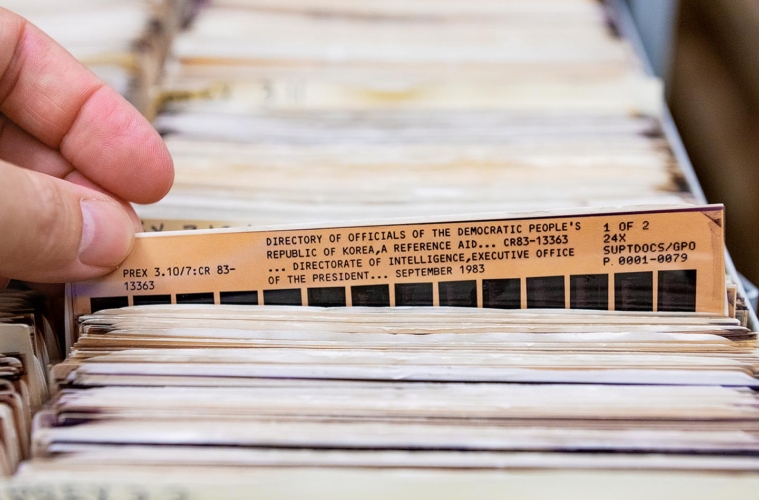Colgate is one of only approximately 1,000 federal government records depositories, which are mostly public and college libraries. As such, its collection of government records, stored in Case Library, has been an invaluable source of information for students and faculty members conducting research. But these days, not all of those records are easily accessible.
In addition to traditional paper records, starting in 1970, the University began to amass a collection of microfiche records — small transparent plastic cards, each holding dozens of shrunken documents — designed to be read in special viewers that magnified each miniature record and enabled researchers to make full-sized copies.
The eventual development of vast and inexpensive digital storage easily supplanted microfiche technology for records management, and the microfiche records were discontinued in 2021. What remained at Colgate was the University’s collection of more than 1.5 million records on those microfiche cards.
Those files became relics of a bygone era of records management, explains Professor of University Libraries and Head of Research and Instruction Joshua Finnell. But instead of simply disposing of them, the University recently donated its entire microfiche collection to the Internet Archive for digitization and long-term storage — effectively opening up global access to many records that were previously only available on campus.
“The history and development of microformats (film and fiche) is a fascinating one, from their role in sending secret messages via carrier pigeon during the Franco- Prussian war in the 1870s to their central role in preserving the nation’s newspapers in the 1930s,” Finnell explains. “Many of the databases we have come to take for granted were originally constructed from digitizing microfilm collections. This is an exciting partnership with the Internet Archive that will ultimately make these documents available and accessible to researchers around the world.”
Facts of Record
- Colgate first became a federal records depository on Feb. 7, 1902.
- Most of the collection is composed of transcripts from congressional meetings, hearings, and various annual reports from federal agencies.
- Records on the microfiche also included NASA files and previously secret documents and official correspondence dating back to the Cuban Missile crisis.
- Some of the oldest paper records on file in the depository are bound in sheep leather.
- The microfiche collection was stored in 12 massive 500-pound cabinets on the third floor of the library. They were located next to the Blackmore Media Center behind the main stairwell.
- During renovations of Case Library in 2004, the third- floor section of the building that stored the records was constructed with additional support to bear the records’ weight.


